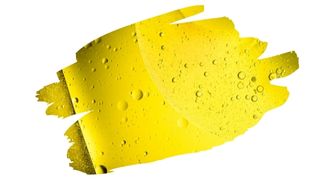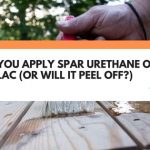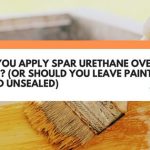It’s one of the most common problems with wood finishing.
Little air bubbles can sometimes end up marring an otherwise smooth final top coat. And it’s an issue that can often crop up when applying Spar Urethane.
Worse still, if those air bubbles still haven’t popped — long after Spar Urethane’s dried — then those bubbles are pretty much there to stay.
Well, in this post, you’ll find out what might be creating all of those air bubbles in that smooth finish. You’ll also learn the top five easy things you can do to prevent bubbles from appearing in the first place.
And keep reading to discover why sanding between each coat of Spar Urethane is so important.

This post may contain affiliate links to products that we receive a commission for (at no additional cost to you). Learn more here.
So Why Is Spar Urethane Bubbling Like That? What’s Causing Those Bubbles?
There are a range of different reasons, but usually the simplest cause lies in the shaking of the can. If you shake the can beforehand, you’ll create little air pockets throughout the liquid.
Another possible cause could be that the base coat underneath, (whether it be a finish, paint, wood stain etc), hasn’t wholly cured yet. As that base coat continues to dry and cure, it’ll release VOC’s.
VOC’s (Volatile Organic Compounds) are the eye-watering fumes that waft off wood finishes, paints and sealers. And those VOC’s can become trapped as air bubbles (if you seal them in with a Spar Urethane coat).
Yet another common cause for bubbles lies in improper brush prep. You always need to prepare your brush by rinsing it in solvents (or water) before you dip that brush into that can of Spar Urethane.
OK. But Will Those Spar Urethane Bubbles Go Away?
More often than not, they will. As long as that spar urethane dries slowly enough, the bubbles will pop on their own.
In fact, this is the main reason why we add slow-drying thinner solvents to wood finishes. Thinning Spar Urethane out can slow down it’s drying rate enough for those bubbles to naturally pop by themselves.
Got It. So How Do I Make Sure I Always Get A Smooth Finish When Applying Spar Urethane?
Simply follow the five best practices when it comes to applying this wood sealant:
1). Never Shake The Can
If Spar Urethane has settled in the can, then stir it with a brush. Never ever shake the can.
2). Let The Base Coat Cure First
This is particularly important if you’re applying Spar Urethane over a slow-drying finish, such as Pure Tung oil.
3). Prepare The Brush
If you’re applying oil-based Spar Urethane: Dip the brush in a solvent, such as mineral spirits, before you then dip it into oil-based Spar Urethane.
If you’re applying water-based Spar Urethane: Always dip the brush in fresh water, before you put it into that can of water-based Spar Urethane.
4). Don’t Use A Foam Brush
Foam brushes are the absolute worst culprits for creating air bubbles in thick wood finishes. So, only ever use a bristle brush (ideally) or a rag to apply those thin coats of Spar Urethane.
Or, you can skip brush preparation altogether by using a Spray-on Spar Urethane product instead.
5). Thin Out The Spar Urethane Before Application
You can thin Spar Urethane out using solvents to help slow down the drying rate of this finish.
Blending a slow-drying thinner solvent into Spar Urethane, can help to slow down the drying speed of this sealant.
Related Post: Can You Apply Spar Urethane Over Shellac (Or Will It Peel Off?)
And Should I Sand Between Coats Of Spar Urethane?
You should. Spar Urethane adheres best when it has a roughened surface to cling onto. Otherwise, it can end up peeling off of that very smooth surface.
Lightly sanding with fine 100-grit to 120-grit sandpaper, is enough to scuff up the surface for each subsequent coat.
What Kind Of Brush Should You Use To Apply Spar Urethane Onto Wood? Use a bristle brush or rag to apply this finish.
To Wrap Up, Here Are The 3 Key Takeaways From This Post…
- 1). Those little pockets of air throughout a Spar Urethane finish, can be caused by a range of different things. Everything — from improper brush preparation to Spar Urethane drying too fast — can create air bubbles in this wood sealer.
- 2). If Spar Urethane dries too quickly, it doesn’t allow time for any rising air bubbles to naturally pop on their own. This is why we sometimes need to thin Spar Urethane out with solvents to help slow down its drying rate.
- 3). If you’re applying Spar Urethane over another finish, make sure the finish underneath has dried and cured first.



